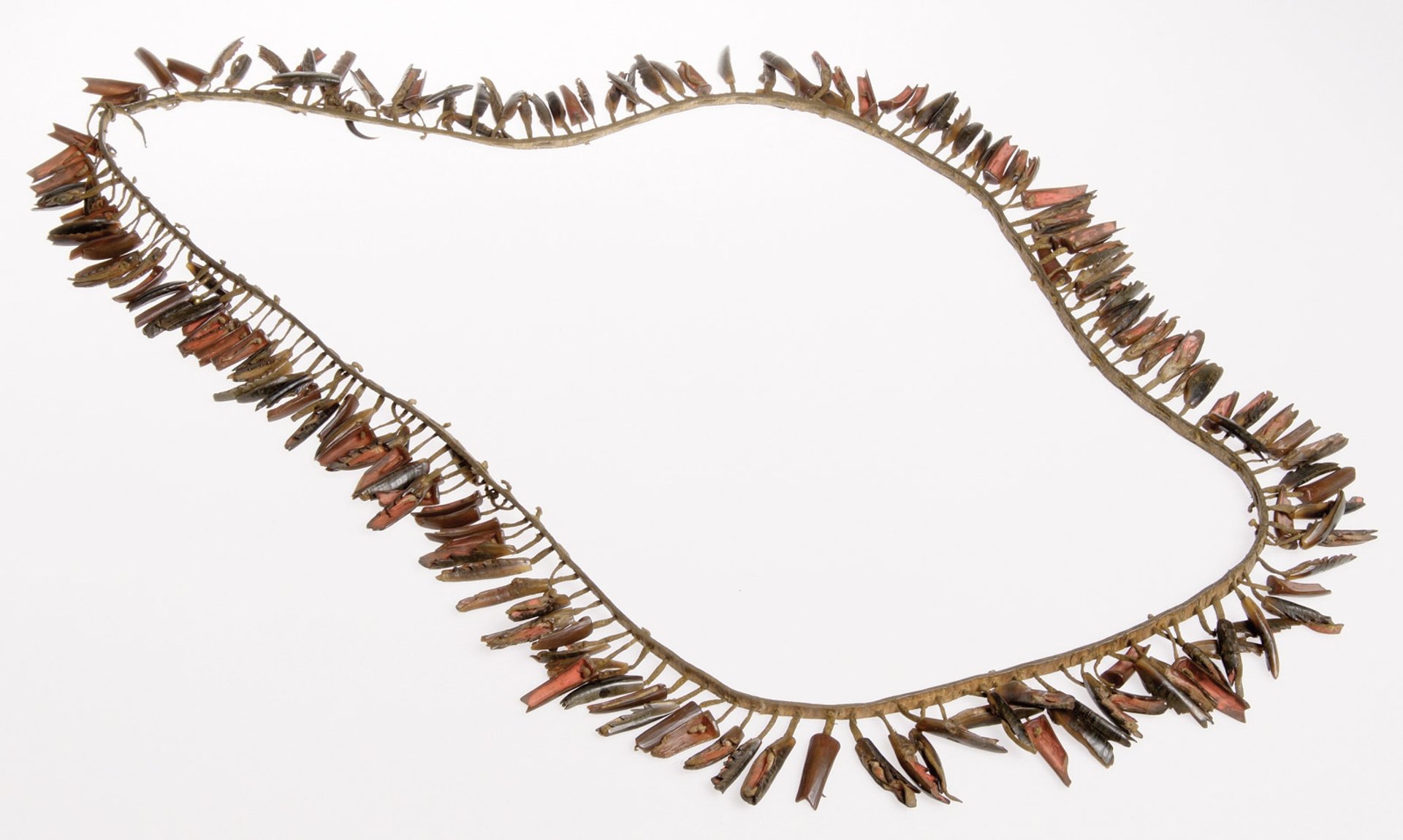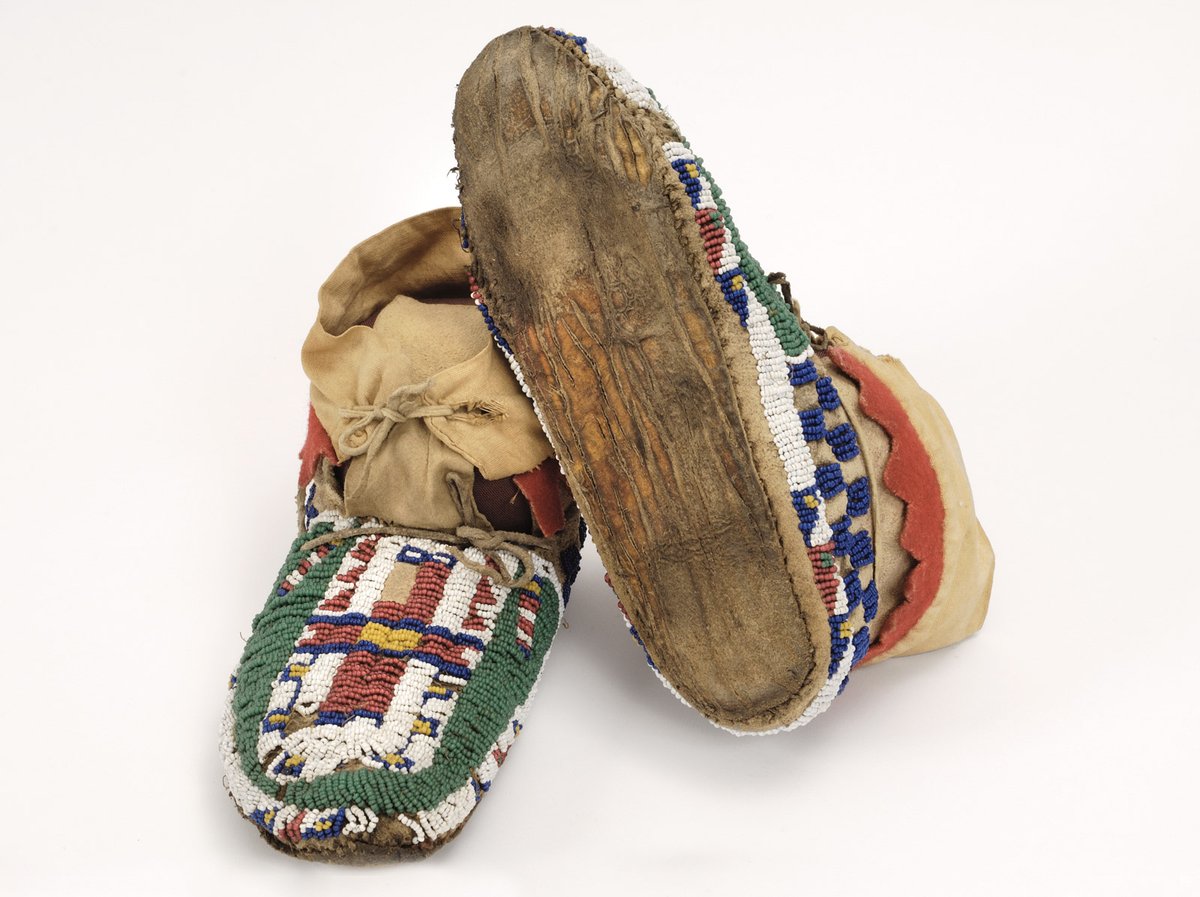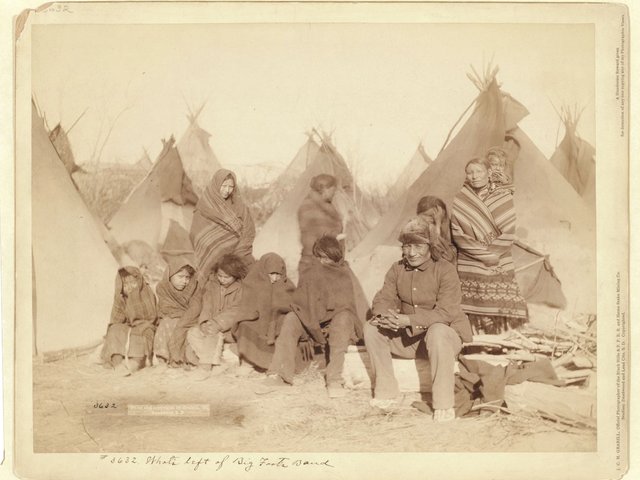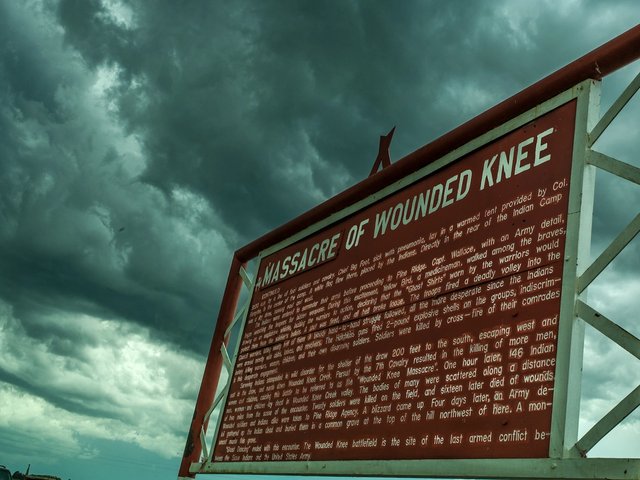Three artefacts stripped from slain Lakota people during the 1890 Wounded Knee Massacre, when US soldiers killed an estimated 300 Lakota on the Pine Ridge Reservation in South Dakota, are at the centre of an unusual repatriation case involving a Scottish institution.
The objects, which include a pair of moccasins, a necklace and a child’s bonnet, were among four artefacts sold to the Kelvingrove Art Gallery and Museum in Glasgow two years after the massacre by the Lakota interpreter George Crager, who was in Glasgow with Buffalo Bill’s Wild West Show, a popular travelling vaudeville act that has since been criticised for racial typecasting and romanticising the conquest of the American frontier.

A war necklace made from pieces of deer’s hooves strung on hide that was taken from a Lakota warrior after the Wounded Knee Massacre © CSG CIC Glasgow Museums and Libraries Collections
The museum had also acquired a Ghost Dance shirt, a Lakota talisman intended to protect its wearer from harm, which was repatriated to the tribe in 1998 after years-long negotiations led by the late Lakota activist Marcella LeBeau (Cheyenne River Sioux). LeBeau was a member of the Wounded Knee Survivors Association, a group of descendants advocating for reparations and repatriation, and a leading figure in an ongoing movement calling for Congress to revoke the medals of honour awarded to 20 soldiers involved in the 1890 massacre.
Past negotiations
For reasons unknown, the three other objects remained in Glasgow. According to David McDonald, the deputy leader and chair of Glasgow Life, the organisation that oversees several museums in Glasgow, the other artefacts were not requested when the Ghost Dance shirt came into question.
Those items belong to our grandfathers and grandmothers—their spirit is still connected to them—but people see prestige and money in themCharles New Holy
However, Charles New Holy, the acting chief of the survivors’ association, says LeBeau was already in the process of negotiating the return of the objects before she died last November, aged 102. He also argues that the Ghost Dance shirt and the three objects still held in Glasgow should come into the possession of the Wounded Knee Survivors’ Association rather than the tribal government, which does not fully represent the direct descendants of the Lakota people massacred during the battle.
“When the Ghost Dance shirt was returned, it didn’t come to the Wounded Knee Survivors’ Association; it went to a tribal council, then a museum,” Holy says. “The whole process overlooked us. Those items belong to our grandfathers and grandmothers—their spirit is still connected to them—but people see prestige and money in them. These are spiritual items that should not be displayed anywhere.”
Although such repatriation cases are protected in the US under the Native American Graves Protection and Repatration Act—which requires federally funded institutions to inventory holdings of Indigenous objects and human remains to facilitate their return—no similar agreement exists between US and foreign governments, leaving the return of artefacts abroad to each museum’s discretion.
Ancestral scalps
The last notable repatriation case with a non-US institution involved the Karl May Museum, a German museum named after a novelist who amassed a vast collection of Indigenous artefacts in the 19th century, as well as 17 scalps belonging to members of the Ojibwe tribe. A request for repatriation was sent in 2014 but the museum hesitated to return the scalps, fearing it would set a precedent, according to Colleen Medicine (Ojibwe/Anishinaabe), the programme director of the Association on American Indian Affairs and a former repatriation specialist for the Ojibwa tribe, who worked on the case.
“There were language and cultural barriers and negotiations over the course of eight years, and ultimately the board of directors—for whatever reason—agreed to repatriate the scalps not to the tribe but to the US Department of State, not acknowledging us as a sovereign nation,” Medicine says. “The State Department had to draft a document with specific verbiage asserting them as custodians, not legal caretakers, before the ancestors were finally delivered to the tribe and reburied.”
Of the three artefacts still held in Glasgow, the moccasins were exhibited at the Kelvingrove from 2006 to 2014, and the Ghost Dance shirt had been on view since at least 1960. There is no record of the other objects being displayed since they entered the collection.
McDonald says the museum is “continuing discussions with LeBeau’s family and the Wounded Knee survivors’ descendant groups”, but adds that “each case is highly individual and involves complex logistics, bureaucracy and costs”.
Last August, Glasgow’s city council reinstated a committee, which last met in 2007, to deal with various repatriation issues, including the return of several Benin bronzes and other artefacts in the city’s museums.




